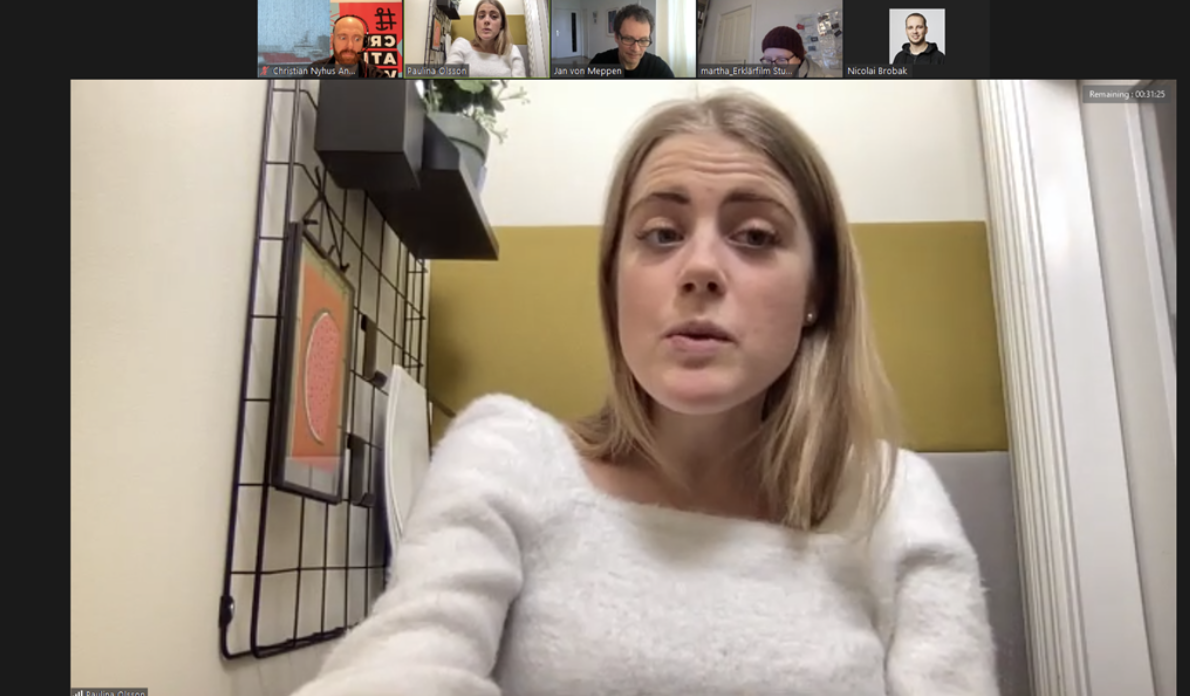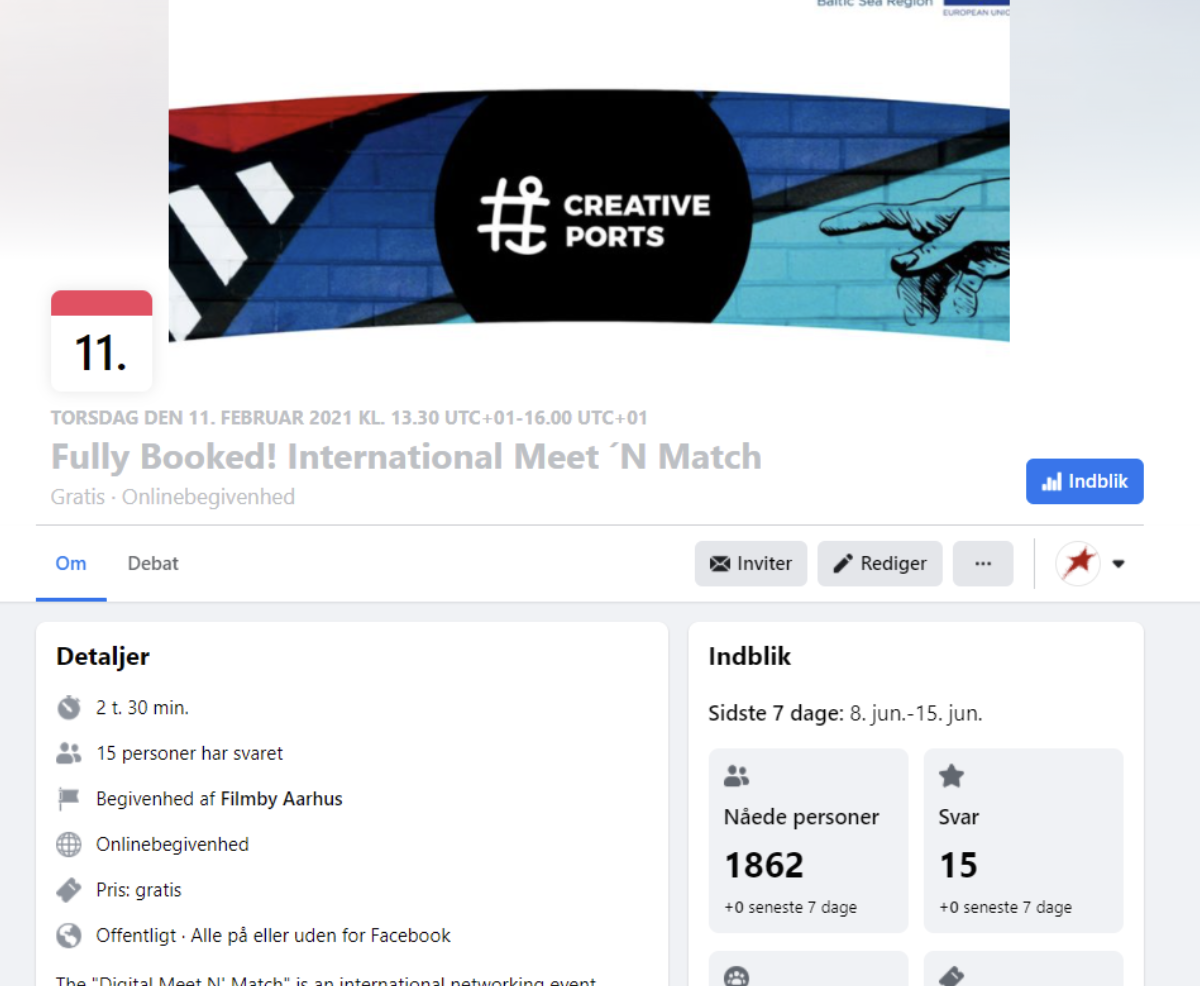Tool 4: International Meet 'n' Match

Idea and Organisation
The International Meet 'n’ Match event gave small and medium-sized enterprises (SMEs) and game developers inspiration for new ideas, methods and technologies and provided an opportunity for matchmaking and professional exchange.

The tool is scalable and adaptable for other sectors within CCI, but at this International Meet ‘n’ Match, the focus was solely on the gaming industry.
(Filmby Aarhus)[https://filmbyaarhus.dk] (Denmark) is the Aarhus municipality centre for film, media production and digital experiences. Filmby Aarhus houses 80+ media companies producing films, VR, games and much more, plus two film studios and two study programmes (VIA Film & Transmedia and Kaos Pilot).
Besides Creative Ports, Filmby Aarhus has held other international development projects, such as the Interreg BSR projects First Motion and Cross Motion and the NSR projects North Sea Screen Partners and Create Converge, which ran until July 2021. Filmby Aarhus also runs Ideas Lab, an incubator where startups working with digital experiences can work and grow through structured sparring.
International Meet’n’Match in Figures
- 7 companies
- 2 hours
- The majority of participants stated that the event was relevant for their work.
Aim and Target Group
The general aim of the International Meet ‘n’ Match event was to provide a platform for game developers and other professionals within the gaming industry across the Baltic Sea Region to meet and find potential future business partners and create an international network. In the match sessions, companies had the opportunity to connect with and get feedback from several mentors over a short period.
Other goals included improving the internationalisation of SMEs within the gaming industry in the Baltic Sea Region, experimenting with formats for informal digital networking and creating value through digital networking practices in precarious times. Therefore, an overall goal was to contribute to knowledge exchange within digitisation practices in the cultural and creative industries.
The Program
For International Meet ‘n’ Match, professionals within the gaming industry across the Batic Sea Region were invited to meet and find potential future business partners and create an international network.
The two-hour event was held as a follow-up event to the one-day conference, “Digital Kids Today”, which was open to anyone who develops or engages in digital content, experiences and products for children.
The event’s objectives were to provide networking and contact building opportunities, brand visibility and showcasing new projects or developments, as participants were expected to pitch projects as part of the event.
The central part of the event was match sessions in which participating companies were grouped in breakout rooms where they had the opportunity to pitch, network and match. A moderator hosted the sessions and the companies were asked to prepare a four-minute pitch including answers to the four questions: Who are you? What are you working on right now? What skills can you offer to other projects? What skills are you seeking for your own projects?
Event schedule
13.30 Virtual Check-in
13.45 Welcome and introduction of the format
14.00 Match session 1
14.30 Match session 2
Break
15.15 Match session 3
15.45 Match session 4
Communication
The organisers recruited companies in an open call for participation and developed the marketing material. The Creative Ports partner organisations helped spread the word in their respective social media channels and newsletters.

Testimonials From Participants
“I made new connections and got some food for thought. I also got the chance to share my experience and knowledge with other participants.”
“The online format for networking worked very well.”
Lessons Learnt
The event was held online due to Covid-19 restrictions, but ideally it would have happened physically. The online platform can be limiting when creating social connections and matchmaking, as participants can’t interact face-to-face. Conversations didn’t flow as naturally and the moderator’s role became more central to kick start topics.
Planning the event alongside another event was fruitful in various ways, as participants were recruited within the same networks and communication channels. The mutual benefit resulted in many early sign-ups, as participants could sign-up for two events in one go. However, there were several dropouts on the day of the event due to the online format. It is much easier for attendees to withdraw from an online event, so it’s pertinent to consider a “no-show” fee or similar for late cancellations.